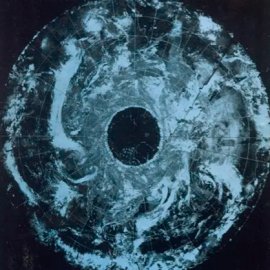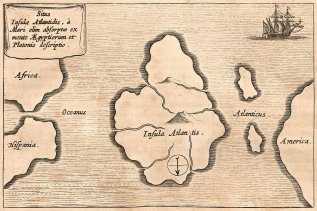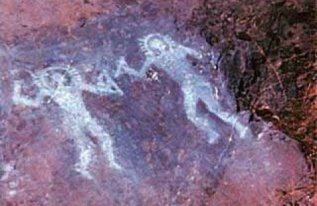Hollow Earth Theory |
Hollow Earth Theory |
Hollow Earth Theory | Hollow Earth Theory |
|
References
(1) Tomas, A, Atlantis From Legend to Discovery p.14
Sphere Aylesbury 1973
(2) Berlitz C, Mystery of Atlantis p. 53 Souvenir
Press London 1977
(3) Berlitz C, Mystery of Atlantis pp. 57-8 Souvenir
Press London 1977
(4) Scientific American 28th July 1877.
(5) Berlitz C, Mystery of Atlantis pp. 66-7 Souvenir
Press London 1977
(6) Hope, M Atlantis, Myth or Reality? p. 80
Arkana, London 1991
(7) Hope, M Atlantis, Myth or Reality? p. 81
Arkana, London 1991
(8) Hope, M Atlantis, Myth or Reality? p. 81
Arkana, London 1991
(9) Tomas, A, Atlantis From Legend to Discovery pp.
15-16 Sphere Aylesbury 1973
(10) Termier, Pierre, L'Atlantide, Monaco 1913.
(11) Tomas, A, Atlantis From Legend to Discovery
p.15 Sphere Aylesbury 1973
(12) Tomas, A, Atlantis From Legend to Discovery
p.15 Sphere Aylesbury 1973
(13) Geographical Society of America Bulletins No. 60 (1949)
and 65 (1954).
(14) Tomas, A, Atlantis From Legend to Discovery
p.14 Sphere Aylesbury 1973
(15) Tomas, A, Atlantis From Legend to Discovery
p.14 Sphere Aylesbury 1973
(16) Tomas, A, Atlantis From Legend to Discovery
p.14 Sphere Aylesbury 1973
(17) The Miami News 23rd August 1968, the Miami
Herald 11th September 1968.
(18) Tomas, A, Atlantis From Legend to Discovery
p.14 Sphere Aylesbury 1973
(19) Ibid
(20) Richards Douglas G, Archaeological Anomalies in the
Bahamas, Journal of Scientific Exploration 2:181, 1988.
(21) Hope, M Atlantis, Myth or Reality? p. 233
Arkana, London 1991
(22) Tomas, A, Atlantis From Legend to Discovery
p.122 Sphere Aylesbury 1973
(23) Ball, Mahlon M., and Gifford, John A., 1980,
Investigation of Submerged Beachrock Deposits Off Bimini, Bahamas
Research Reports National Geographical Society, Vol. 12. P21-38
(24) Gifford, John A, 1973, A Description of the Geology
of the Bimini islands, Bahamas, University of Miami, Florida pp11-12
(25) McKusick, M., and Shinn, E.A., 1980 Bahamian Atlantis
Reconsidered, Nature, Vol. 287 No 5777 pp 11-12
(26) Kye, Charles A., 1959, Shoreline Features and
Quaternary Shoreline Changes, Puerto Rico US Geological Survey
Professional paper No. 317-B, pp 49-140.
(27) McLean, Roger F., 1964, A Regional Study of the
Distribution, Forms, Processes, and rates of Mechanical and Biological Erosion
of a Carbonate Clastic Rock in the Littoral Zone. Unpublished Ph.D.
dissertation, McGill University.
(28) Ball, Mahlon M., and Gifford, John A., 1980,
Investigation of Submerged Beachrock Deposits Off Bimini, Bahamas
Research Reports National Geographical Society, Vol. 12. P21-38
(29) Strasser, A., and Davaud, E., 1986, Formation of
Holocene Limestone Sequences by Progradation, Cementation and Erosion; Two
Examples from the Bahamas Journal of Sedimentary Petrology, Vole 56 No 3 p
422-428
(30) McKusick, M., and Shinn, E.A., 1980 Bahamian Atlantis
Reconsidered, Nature, Vol. 287 No 5777 pp 11-12
(31) Randi, J., Atlantean Road: the Bimini Beach
Rock Skepical Inquirer Vol. 5 No. 3 pp 42-43 1981
(32) Kolosimo, Peter, Timeless Earth p.40
(33) Wilkins, Harold T., Mysteries of Ancient South
America pp.169-170.
(34) Wilkins, Harold T., Mysteries of Ancient South
America p.175
(35) Stemman, R, Mysteries of the Universe p. 162
Book Club Associates LOndon 1980
(36) Fate and Fortune Magazine p. 40 #2 1974.
(37) New York Times 8th November 1967 p. 2
(38) Amazing Stories pp 171-2 Oct 1947.
(39) Omni Magazine, October 1983.
(40) Mystic places p. 147 Time Life Books.
(41) Trench, Brinsley, Secret of the Ages p.116
Panther, 1976
 However, the tunnels themselves are real, and similar underground passageways have also been found in Europe. Malcolm W Browne in his article Underground Tunnels Threaten Town In Hungary's Wine Country refers to over sixty miles of ancient tunnel systems of unknown origin and purpose which have been discovered beneath the town of Eger, Hungary, some of which have collapsed (37). Amazing Stories magazine of October 1947 contained the following letter: "Sirs ...I don't know whether you are familiar with the Big Bend or not, but there is no more wild or desolate area in the country. Rugged mountains, cut by canyons, there are innumerable parts of it which have never known the foot of man. ...Finlay [a friend of the letter's author] spotted a mountain lion ... they managed to keep him in sight ... the lion, however, started up a faint trail up one side of the canyon to a small cave they could see about a hundred feet from the floor of the canyon. They followed him up this trail, but when they got to the cave - there was no lion! ... In the rear [of the cave] was a perfectly round hole ... they approached the hole and peered down into it. It was perfectly round - also it was about four or five feet in diameter. They couldn't see very far down it, but it appeared to descend rather sharply and at a steady gradient.
However, the tunnels themselves are real, and similar underground passageways have also been found in Europe. Malcolm W Browne in his article Underground Tunnels Threaten Town In Hungary's Wine Country refers to over sixty miles of ancient tunnel systems of unknown origin and purpose which have been discovered beneath the town of Eger, Hungary, some of which have collapsed (37). Amazing Stories magazine of October 1947 contained the following letter: "Sirs ...I don't know whether you are familiar with the Big Bend or not, but there is no more wild or desolate area in the country. Rugged mountains, cut by canyons, there are innumerable parts of it which have never known the foot of man. ...Finlay [a friend of the letter's author] spotted a mountain lion ... they managed to keep him in sight ... the lion, however, started up a faint trail up one side of the canyon to a small cave they could see about a hundred feet from the floor of the canyon. They followed him up this trail, but when they got to the cave - there was no lion! ... In the rear [of the cave] was a perfectly round hole ... they approached the hole and peered down into it. It was perfectly round - also it was about four or five feet in diameter. They couldn't see very far down it, but it appeared to descend rather sharply and at a steady gradient. A major advocate that the Earth is hollow, thus that these tunnels led to an 'inner world' was Cyrus Teed. Teed came to this conclusion shortly after the American civil war when he claimed to have had a vision, "the earth is a hollow sphere, and we live inside it. Everything in the universe is in here with us - planets, comets, stars - everything. What's outside the sphere? Nothing." (39) Teed explored this idea in a book entitled The Cellular Cosmogony, or, the Earth a Conclave Sphere which he wrote under the pseudonym 'Koresh'. According to Teed, the known world is on the concave, inner surface of a sphere, outside of which there is only a void. At the centre of the sphere, the rotating sun, half dark and half light, gives an illusion of rising and setting. The Moon is a reflection of the Earth's surface; the stars and planets reflect from metallic planes on the Earth's concave surface.
A major advocate that the Earth is hollow, thus that these tunnels led to an 'inner world' was Cyrus Teed. Teed came to this conclusion shortly after the American civil war when he claimed to have had a vision, "the earth is a hollow sphere, and we live inside it. Everything in the universe is in here with us - planets, comets, stars - everything. What's outside the sphere? Nothing." (39) Teed explored this idea in a book entitled The Cellular Cosmogony, or, the Earth a Conclave Sphere which he wrote under the pseudonym 'Koresh'. According to Teed, the known world is on the concave, inner surface of a sphere, outside of which there is only a void. At the centre of the sphere, the rotating sun, half dark and half light, gives an illusion of rising and setting. The Moon is a reflection of the Earth's surface; the stars and planets reflect from metallic planes on the Earth's concave surface.











